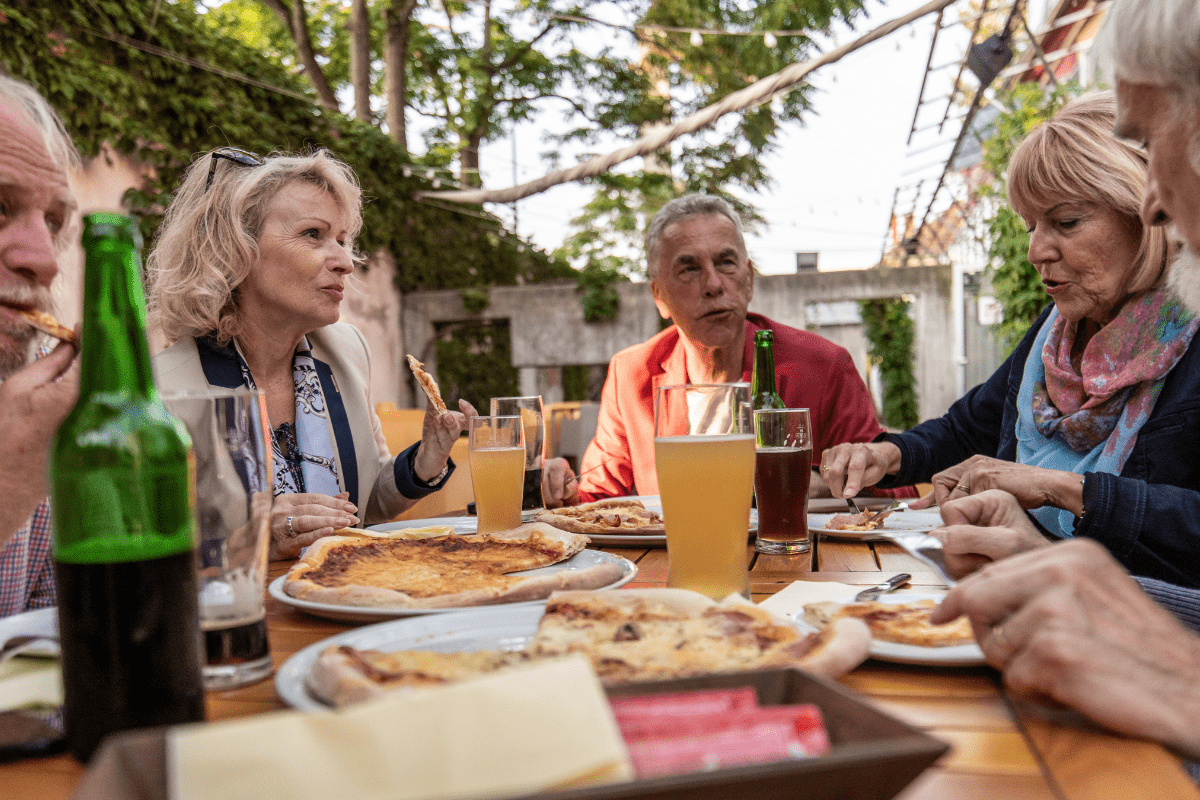Let's be honest: finding after-school activities in Sioux Falls feels like solving a Rubik's cube while your kid asks "what's for dinner" 47 times. Between work schedules, pickup logistics, and trying to remember which child needs cleats versus ballet shoes, it's enough to make any parent consider homeschooling… until you remember long division exists.
Here's what's actually happening in Sioux Falls right now
The after-school landscape in Sioux Falls is changing faster than my kids can lose their water bottles. This year brought something genuinely helpful: Community Learning Centers (CLCs) at all 22 elementary schools, plus three brave middle schools testing the waters. Finally, someone realized that parents can't teleport from work at 3:15 pm.
Here's the reality check though. About 42,000 South Dakota kids would join after-school programs if they could actually find one. That's a lot of children watching YouTube videos about making slime while their parents frantically search for options. The good news? Parents who do find programs report 99% satisfaction rates. So once you crack the code, you're golden.
Cost is the elephant in the room that's eating all your groceries. Parents typically spend between $7,785 and $12,400 annually on after-school care. That's approximately one kidney on the black market, or so I've heard. But stick with me… there are actually affordable options if you know where to look.
The programs that won't require a second mortgage
District programs (aka the reasonable ones)
The school district finally figured out that not everyone has a trust fund. Their Community Learning Centers operate at every elementary school now, staying open until 6 pm because someone actually asked a working parent what time they get off work. Revolutionary concept, right?
The three middle schools piloting the program are George McGovern, Ben Reifel, and Whittier. If your middle schooler goes elsewhere, you'll have to wait until 2026-27 when they might expand district-wide. Because apparently middle schoolers at other schools don't need supervision. They're probably fine. Everything is fine.
Here's where it gets interesting financially. The Kids Inc. After School Enrichment program uses sliding scale fees that actually make sense:
- Regular lunch families: $84 per two weeks
- Reduced lunch families: $68 per two weeks
- Free lunch families: $51 per two weeks
About 40% of students get some scholarship help, though program coordinator Rebecca Wimmer admits cost is still why most families eventually drop out. At least she's honest about it.
The free and cheap heroes
Boys & Girls Clubs might just save your sanity and your bank account. They offer free programming at multiple sites, include transportation from some schools, and even feed your kids. It's like they actually understand how parenting works.
They're building a fancy new 16,000 square foot facility at George McGovern Middle School, which will be the district's first school-based club. Their track record is pretty impressive too… 97% of their teens expect to graduate high school. Though let's be real, my teen expects a lot of things, like me understanding TikTok.
The YMCA runs programs at 13 locations, with free after-school programming at McGovern, Whittier, and Ben Reifel middle schools thanks to United Way funding. They provide daily bus service to their Youth Performance Center, solving the eternal "how do I be in two places at once" parenting dilemma.
Sports: Where dreams of college scholarships go to multiply
The year-round wallet drainers
Let's talk about sports, where every parent becomes convinced their 8-year-old is destined for the Olympics. The YMCA Jr. Skyforce Basketball program is clever marketing at its finest… some teams actually play on the professional Skyforce court. Your kid gets free game tickets, and you get discounted family tickets to watch actual basketball while pretending you understand what a pick-and-roll is.
Registration happens in September for fall/winter leagues or December if you're a procrastinator who only wants winter. They didn't list prices, which in parent-speak means "expensive but includes enough perks that you'll justify it."
For the ice lovers, SCHEELS IcePlex has grown from 450 to 800+ participants since opening. They start Mini-Atoms at age 4, because apparently that's when children need to learn how to check each other into boards. Registration for 2025-2026 is open now, giving you plenty of time to mentally prepare for 6 am practices.
Swimming lessons at SafeSplash will run you $31.75 per session for small group classes. That's basically the cost of a family meal at a restaurant, except instead of chicken nuggets, your kid learns not to sink. The city pools offer Red Cross programs for ages 5-14 if you prefer the chlorine-and-nostalgia approach.
Seasonal sports that eat your weekends
Dakota Alliance Soccer Club is where suburban dreams come true. For $90-110 per season depending on grade, your child gets to chase a ball around while you pretend to understand offside rules. The July 14 deadline guarantees placement for fall, after which it's basically Hunger Games for remaining spots.
Games are mostly weekends with some weekday evenings thrown in to ensure you never have a free moment. Teams are formed by school zones, so at least your carpool options might include someone you actually know. Uniforms are included, which is nice since kids grow faster than weeds in miracle grow.
Baseball and softball in Sioux Falls got fancy after the Little League made back-to-back World Series appearances. Now every parent thinks their kid is the next big thing. The Sanford Sports Complex has 10 FieldTurf fields, because apparently regular grass isn't good enough anymore.
Arts programs: For kids who think outside the diamond
The affordable creativity outlets
Washington Pavilion offers actual culture for $12.50 youth admission to the Visual Arts Center. Their Action Arts program reaches 500 kids weekly at Title 1 schools, proving art isn't just for kids whose parents drive Teslas.
Free First Fridays include science demonstrations, which is perfect for parents who want educational activities but also enjoy the word "free." It's like a museum visit without the gift shop meltdown.
Private studios where dreams get expensive
BritZa Performing Arts has pricing tiers that would make an airline jealous. Their fee structure goes like this:
- Tiny dancers (ages 2-8): $45-65 monthly
- Medium dancers (grades 3-6): $50-70 monthly
- Big dancers (grades 7-12): $60-75 monthly
- Your wallet: Increasingly empty
That's before the $75-90 in registration and costume fees, plus $60 for the spring recital where you'll cry watching your kid forget the choreography. The optional Christmas show adds another $45, because apparently regular December isn't expensive enough.
Just For Kix has locations on both sides of town, offering everything from kick to hip hop. Some teams even earn bowl game tours, which sounds impressive until you realize you're now funding a trip to Orlando in addition to dance classes.
Academic support: Because homework doesn't do itself
Free help for the homework-challenged
Boys & Girls Clubs offers daily Power Hour homework help with actual registered teachers. This is brilliant because it means homework battles happen with someone else's emotional energy. Their stats are impressive… 80% of teens have submitted college applications, though whether they remembered to hit "submit" is another question.
The Clubs just scored a $1.1 million grant for enhanced programming, proving that sometimes good things happen to good organizations.
The paid brain boosters
Kumon will teach your kid math through daily 30-minute worksheets. It's like CrossFit for elementary schoolers, complete with levels and probably some tears. They're at 3616 S Southeastern Ave if you want to drive by and feel the intensity.
Sylvan Learning claims students achieve "3x more growth than peers," which sounds made up but desperate parents don't fact-check marketing claims. Mathnasium uses small groups and personalized instruction, because apparently kids learn better when there are fewer of them to distract each other.
STEM: Preparing for jobs that don't exist yet
Code Ninjas on West 85th Street teaches coding through games, because tricking kids into learning is an art form. Ages 5-14 progress through martial arts-style belts from white to black over four years, learning everything from Scratch to JavaScript.
They're open Monday-Thursday 3-7 pm plus Saturdays, with drop-in flexibility. This is genius because it acknowledges that kids' schedules are more complicated than air traffic control.
FIRST LEGO League programs show 94% of participants improving problem-solving skills, which is great because my kid's current strategy is "yell until someone helps."
Special needs programs that actually get it
LifeScape runs a specialty school for ages 3-21 with individualized everything. Their Pathways to Life program for 18-21 year-olds has school districts covering tuition, which is refreshingly reasonable for once.
Special Olympics South Dakota offers free sports training in 12 different sports. Their Unified Sports programs integrate athletes of all abilities, teaching kids that inclusion isn't just a buzzword on school newsletters.
Lutheran Social Services Here4Youth maintains a 1:5 staff ratio and stays open until 6 pm on school days. The Compass Center provides free trauma-informed care including play therapy, because sometimes kids need more than just a place to hang out after school.
Registration: The annual parent obstacle course
What you'll need (besides patience)
Get ready for paperwork that rivals a mortgage application. You'll need:
- Birth certificate within 30 days
- Updated immunization records
- Proof you exist and live where you say
- Superhuman organizational skills
Sixth graders specifically need Tdap and MCV4 vaccines, because puberty isn't challenging enough without adding shots to the mix.
Deadlines that will haunt your dreams
Mark these dates or suffer the consequences:
- Soccer: July 14 for guaranteed fall placement
- Basketball: September or December, depending on procrastination level
- Middle school CLCs: Already started for fall 2025
- Everything else: Usually when you're least prepared
The middle school CLC pilot programs filled up faster than Taylor Swift tickets, so if you missed it, you're waiting until the 2026-27 expansion.
The transportation struggle is real
Some programs include transportation, which should really be advertised in flashing neon lights. Boys & Girls Clubs picks up from select schools. The YMCA runs daily buses to their Youth Performance Center. LSS has designated elementary pickups.
For everyone else? Good luck. As program coordinator Rebecca Wimmer admits, transportation remains "a significant barrier." That's bureaucrat speak for "you're on your own, parents."
Making decisions without losing your mind
Start by asking yourself what you actually need. Basic childcare? Academic help because Common Core math broke you? Skill development so your kid has hobbies beyond Minecraft? Therapeutic services because life is complicated?
Once you know what you need, face the budget reality. Many programs offer scholarships but don't advertise them, probably because they enjoy watching parents panic. Always ask about sliding scales, payment plans, and whether selling a kidney is really necessary.
Remember that different ages need different things:
- Elementary kids: Basic skills, learning to human
- Middle schoolers: Identity crisis management
- High schoolers: College prep and existential dread
What's coming next (spoiler: more changes)
The 2026-27 school year might bring district-wide middle school CLCs, assuming the pilot programs don't implode. Boys & Girls Clubs relocated their teen program to a bigger space, acknowledging that teenagers take up more room both physically and emotionally.
Federal funding that kept programs afloat during COVID is expiring, which means sustainability is the new panic word in after-school circles. Programs also can't find enough staff, probably because managing 20 kids requires superhero abilities but pays like a sidekick.
The bottom line (without the corporate speak)
Finding after-school programs in Sioux Falls is like assembling IKEA furniture… theoretically possible but guaranteed to involve some cursing. The good news is that options exist at every price point, from free Boys & Girls Clubs to private programs that cost more than your car payment.
Start early, ask about hidden scholarships, and remember that perfect is the enemy of good enough. Your kid doesn't need to master violin, Mandarin, and advanced calculus by age 10. Sometimes just having a safe place to go after school where someone makes sure they do their homework is winning.
And if all else fails? There's always next semester to figure it out. That's what I keep telling myself, anyway.





